James R. Williamson
Longitudinal Acoustic Speech Tracking Following Pediatric Traumatic Brain Injury
Sep 09, 2022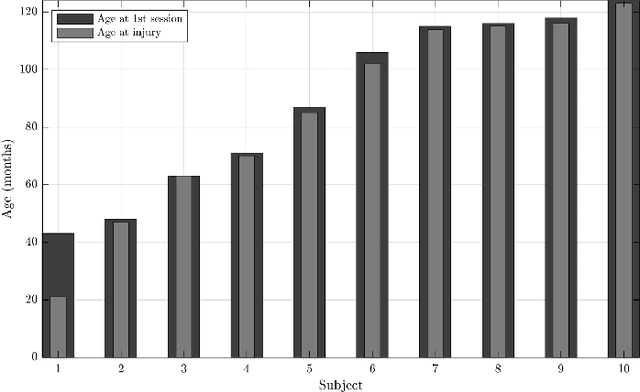
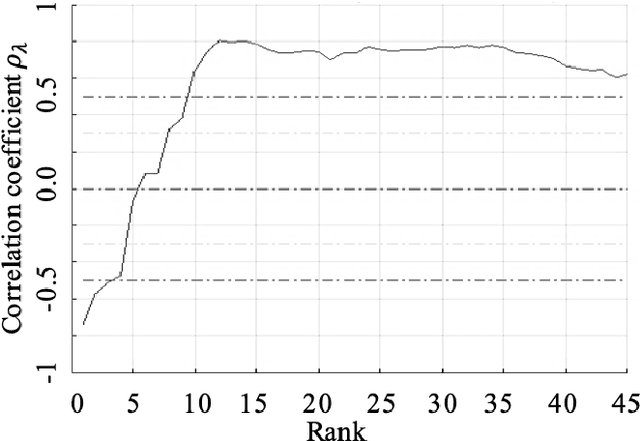
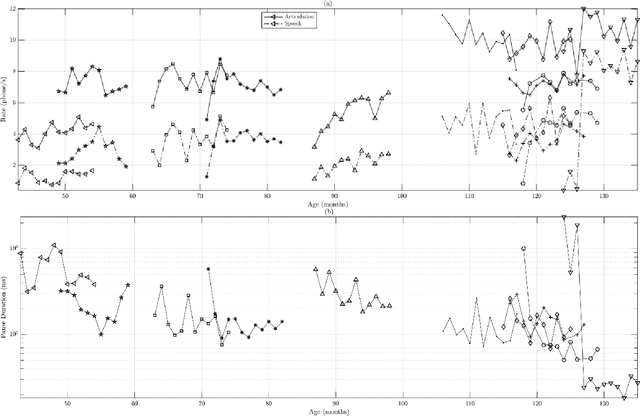
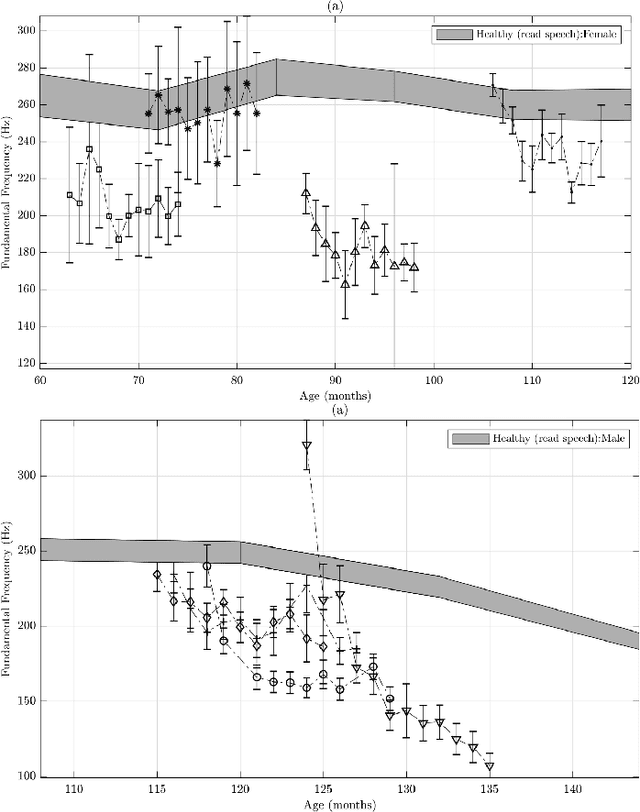
Abstract:Recommendations for common outcome measures following pediatric traumatic brain injury (TBI) support the integration of instrumental measurements alongside perceptual assessment in recovery and treatment plans. A comprehensive set of sensitive, robust and non-invasive measurements is therefore essential in assessing variations in speech characteristics over time following pediatric TBI. In this article, we study the changes in the acoustic speech patterns of a pediatric cohort of ten subjects diagnosed with severe TBI. We extract a diverse set of both well-known and novel acoustic features from child speech recorded throughout the year after the child produced intelligible words. These features are analyzed individually and by speech subsystem, within-subject and across the cohort. As a group, older children exhibit highly significant (p<0.01) increases in pitch variation and phoneme diversity, shortened pause length, and steadying articulation rate variability. Younger children exhibit similar steadied rate variability alongside an increase in formant-based articulation complexity. Correlation analysis of the feature set with age and comparisons to normative developmental data confirm that age at injury plays a significant role in framing the recovery trajectory. Nearly all speech features significantly change (p<0.05) for the cohort as a whole, confirming that acoustic measures supplementing perceptual assessment are needed to identify efficacious treatment targets for speech therapy following TBI.
Assessing Functional Neural Connectivity as an Indicator of Cognitive Performance
Jul 29, 2016
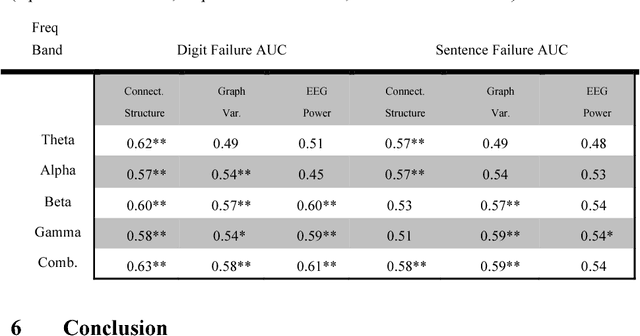
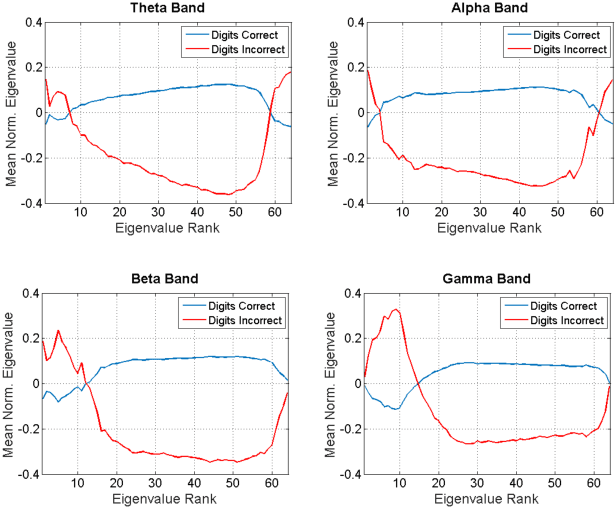
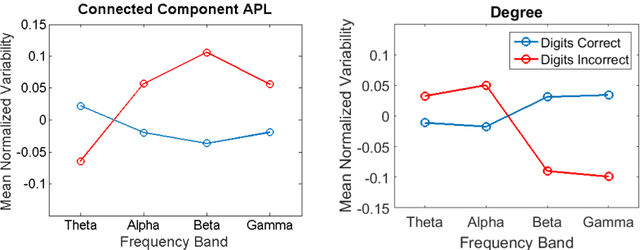
Abstract:Studies in recent years have demonstrated that neural organization and structure impact an individual's ability to perform a given task. Specifically, individuals with greater neural efficiency have been shown to outperform those with less organized functional structure. In this work, we compare the predictive ability of properties of neural connectivity on a working memory task. We provide two novel approaches for characterizing functional network connectivity from electroencephalography (EEG), and compare these features to the average power across frequency bands in EEG channels. Our first novel approach represents functional connectivity structure through the distribution of eigenvalues making up channel coherence matrices in multiple frequency bands. Our second approach creates a connectivity network at each frequency band, and assesses variability in average path lengths of connected components and degree across the network. Failures in digit and sentence recall on single trials are detected using a Gaussian classifier for each feature set, at each frequency band. The classifier results are then fused across frequency bands, with the resulting detection performance summarized using the area under the receiver operating characteristic curve (AUC) statistic. Fused AUC results of 0.63/0.58/0.61 for digit recall failure and 0.58/0.59/0.54 for sentence recall failure are obtained from the connectivity structure, graph variability, and channel power features respectively.
 Add to Chrome
Add to Chrome Add to Firefox
Add to Firefox Add to Edge
Add to Edge